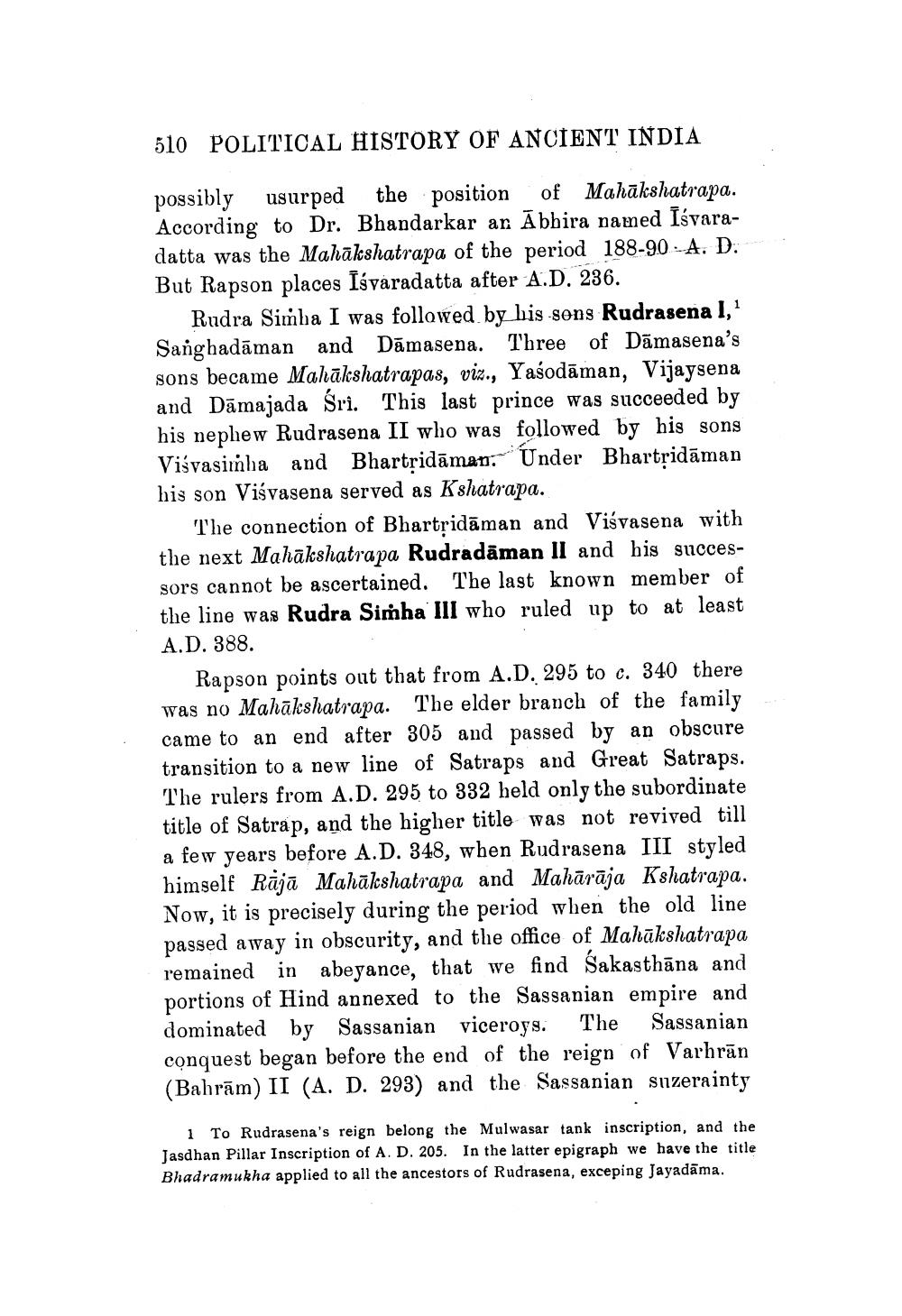________________
510 POLITICAL HISTORY OF ANCIENT INDIA
possibly usurped the position of Mahākshatrapa. According to Dr. Bhandarkar ar Ābbira named īśvaradatta was the Mahākshatrapa of the period 188-90-A. D. But Rapson places Iśvaradatta after A.D. 236.
Rudra Simha I was followed by his sons Rudrasena 1,' Sanghadāman and Dāmasena. Three of Dāmasena's sons became Mahākshatrapas, viz., Yasodāman, Vijaysena and Dāmajada Sri. This last prince was succeeded by his nephew Rudrasena II who was followed by his sons Visvasimha and Bhartridāman. Under Bhartridāman his son Visvasena served as Kshatrapa.
The connection of Bhartridāman and Visvasena with the next Mahākshatrapa Rudradāman II and his successors cannot be ascertained. The last known member of the line was Rudra Simha III who ruled up to at least A.D. 388.
Rapson points out that from A.D. 295 to c. 340 there was no Mahākshatrapa. The elder branch of the family came to an end after 305 and passed by an obscure transition to a new line of Satraps and Great Satraps. The rulers from A.D. 295 to 332 held only the subordinate title of Satrap, and the higher title was not revived till a few years before A.D. 348, when Rudrasena III styled himself Rājā Mahākshatrapa and Mahārāja Kshatrapa. Now, it is precisely during the period when the old line passed away in obscurity, and the office of Mahākshatrapa remained in abeyance, that we find Sakasthāna and portions of Hind annexed to the Sassanian empire and dominated by Sassanian viceroys. The Sassanian conquest began before the end of the reign of Varhrān (Bahrām) II (A. D. 293) and the Sassanian suzerainty
1 To Rudrasena's reign belong the Mulwasar tank inscription, and the Jasdhan Pillar Inscription of A. D. 205. In the latter epigraph we have the title Bhadramukha applied to all the ancestors of Rudrasena, exceping Jayadāma.




